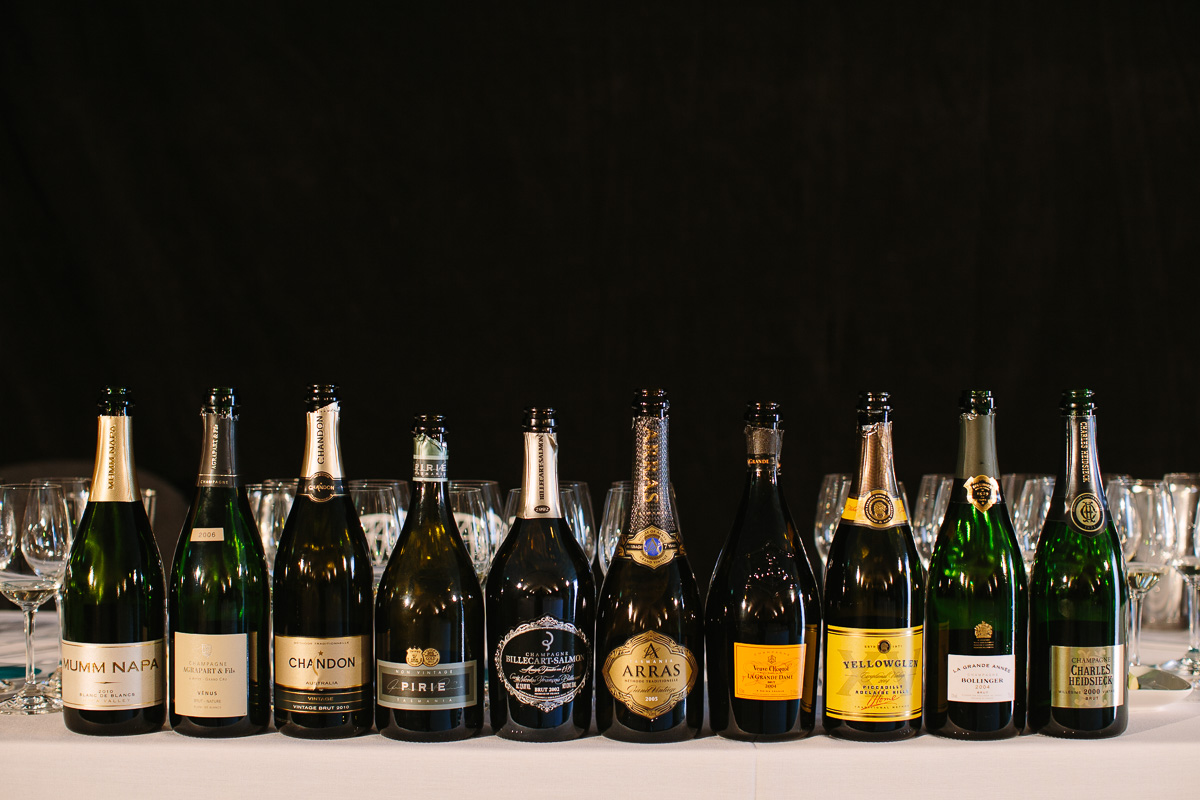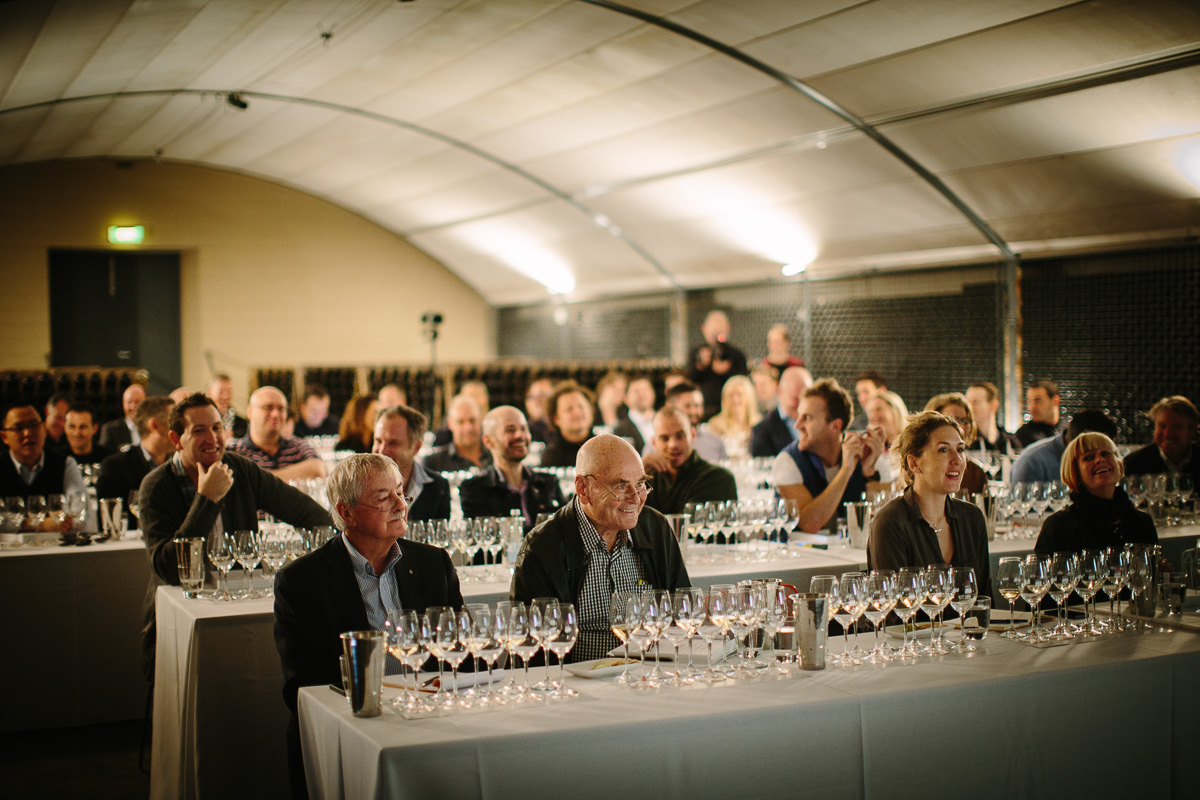The headline tasting at the recent Chandon Sparkling Summit was a tasting of ten sparkling wines and Champagnes, designed to show a spread of stylistic possibilities from light to heavy. The tasting sought to challenge the willingness to choose one style over another and instead looked at successful examples under a number of guises.

Age was an obvious point of departure for preferences with the youngest being the non-vintage Tasmanian sparkling Pirie, and the oldest the 2000 Charles Heidsieck Millesime Brut. The other major point of contrast was that of elegance and finesse versus wines of power and richness.
Chandon’s head winemaker, Dan Buckle, first hosted this trade and media event in 2012 when he arrived from his cool-climate Shiraz-centric winemaking role at Mount Langi in the Grampians. It was serendipitous in that his personal desire to explore the world of Champagne and sparkling wine coincided with a time when a booming trade in newly imported wines was raising interest in the local market.
The exercise is a brave one for Chandon, as their wines are cast among some illustrious examples and blindtasted by a room of around sixty experienced palates. They also put highly rated wines from their biggest domestic sparkling competitors in the mix, selecting wines deliberately to create a strongly competitive environment both on paper and in the glass.

The Chandon Vintage Brut 2010 was deployed against a field of predominantly older domestic and imported examples, and the tasting was roughly styled from lightest to richest. Independent lab analysis data was also provided after the wines were revealed, adding some handy insights into the way in which the various styles were crafted. (Note: If you’re interested in that information, post a comment and I’ll respond with the relevant data.)
One of the most interesting aspects was also the issue of understanding when the more complex wines are at their highest point of evolution, a factor that is all too often overlooked when buying these wines in restaurants or from merchants. The “when to drink” question is arguably the biggest consideration when looking at the top end of Champagne and other bottle-fermented sparkling wines. Below are some prime examples.
Mumm Napa Valley Blanc de Blancs 2010
This is a blend of 83% chardonnay and 17% pinot gris, which makes it unique to this company. It’s very fresh and perfumed. Simple apple and pears, orchard fruits, assertive acidity and cut. There’s a real hit of malic acid here; it bites crisp with green apple flavor. 91 points. Drink now.
Agrapart Venus Blanc de Blancs Champagne Grand Cru Brut Nature 2006
From a tiny a 0.3 ha horse-ploughed plot in Avize, this is fermented in oak and is a much more savory, aldehydic and almost shows a cidery, sherry-like style with lemon pith and almond husks. It delivers an almost sour nose – right at the extreme of the style. The palate has depth and richness and really sails along with a sherbet-like acid texture. There’s handy depth and weight before it chisels fine through the finish. The nose and palate deliver very different impressions; it tastes vastly more elemental than it smells. Contradictory. 92 points. Drink now.
Chandon Yarra Valley Vintage Brut 2010
Very fresh and composed still showing just primary autolysis aromas, some praline, honey and light red fruits along with a bright, gently reductive flinty edge. Palate is supple, round and fleshy with plenty of red fruit impact, fine phenolics and a gentle flurry of acid to close. 93 points. Drink in 2020.
Pirie Tasmania NV
A simple non-vintage Tasmanian sparkling with chalky green orchard fruits and some fresh yeast and bready aromas. The palate’s full of crisp apple, fresh bread dough and delivers a gentle texture, really soft and balanced. Nicely polished. 91 points. Drink now.
Billecart-Salmon Champagne Cuvée Nicholas Francois 2002
A very attractive wine that has complex and layered red fruit elements to the nose, some gentle honey, a lot of comforting toasty autolysis, flinty reduction and an array of citrus, orchard and stone fruits. The palate has an almost saline minerality, is long and finely textured and shows the long time on lees. There’s a core of fresh acidity that carries it long, deep and fine. 97 points. Drink now.
Arras Tasmania Grand Vintage 2005
This is very complex and a wine full of vitality and life at 10 years of age. It has a restrained, tightly wound nose, saline stony and chalky aromas and a gentle herbal thread. There’s some oyster shell too, lemons and hints of red fruits. A slightly richer palate arrives after a very restrained nose, delivering supple and curvaceous red fruit flavors with impressive build. The acidity holds underneath and there’s praline and roasted nuts through the finish, as well as smooth phenolics here to close. 93 points. Drink now.
Veuve Champagne La Grande Dame 2004
A deep, rich and savory wine that always has a more brash and bold style. This is a very complex and powerful edition that really speaks of strong pinot noir fruits. The nose has dense darker citrus, lemon, chalk and fresh nutty complexity – the palate is assertive and unevolved with really solid pinot drive and a gently toasty finish. Needs some time – much more to come if cellared on cork. 94 points. Drink in 2020.
Yellowglen Adelaide Hills Exceptional Vintage XV Piccadilly Valley 2004
Quite floral and very fine chalky elements to the nose, fresh honey, herbs, eucalyptus, fresh citrus and plenty of cashewy savory characters. The palate has depth and weight, really holding deep and long. Phenolics drive the length here with almandine, almost marzipan, red fruits to close. 91 points. Drink now.
Bollinger Champagne La Grande Année 2004
A bold and forthright style that has some integrating to do, this is a powerhouse of flavor and complexity, showing some bright red fruit aromas, plenty of autolysis, a swathe of toasty oak and a gentle grassy edge. The palate has a very assertive style to it, delivers immense flavor and depth, sweet ripe rich pinot fruits and a very satisfying toffee-coated hazelnut finish. 95 points. Drink in 2017.
Charles Champagne Heidsieck Millesime Brut 2000
Candied grapefruit and nicely delivered autolysis are the hallmarks of the nose as well as biscuit spices. The palate has plenty of weight, depth and relatively high sugar at 13.1g/litre, delivering an opulent texture and flavors of sweet ripe stone and tropical fruits. It’s very satisfying. Showcases the warmth of the vintage. Complex, composed, very layered and complete. 94 points. Drink now.
Contributing Editor Nick Stock is a renowned Australian wine writer, author, presenter and filmmaker who reports on his worldwide wine tasting experiences for JamesSuckling.com.
